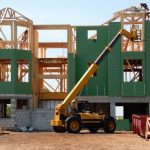In the dynamic world of construction, efficiency and precision are crucial. One of the emerging technologies that is significantly enhancing these aspects is laser scanning. Whether you’re managing small-scale residential projects or massive infrastructural developments, understanding how to locate them in construction using cutting-edge technology can make a substantial difference.
Understanding Laser Scanning Technology
Laser scanning has revolutionized the construction industry by providing an accurate, three-dimensional representation of both the project site and the progress of the work. The technology works by emitting laser beams over an area which bounce back from the surfaces, creating a precise digital model. But why has this become such an indispensable tool?
First, the precision offered by laser scanning is unparalleled. It reduces human error significantly, particularly in measuring difficult-to-reach areas. This accuracy is vital for large-scale construction projects where the stakes are exceedingly high. Secondly, it saves time. The rapid capture of data allows for real-time analysis, thus accelerating decision-making processes and project execution.
The Main Advantages of Utilizing Laser Scanning in Construction
By incorporating laser scanning into the construction process, builders and engineers can avoid lengthy manual measurements, ultimately speeding up project timelines. One distinct advantage is the ability to create digital records of pre-existing conditions. This is crucial for renovation projects where understanding existing constraints is vital.
Moreover, laser scanning provides a comprehensive overview of the site’s topography, enabling more accurate planning and design. This facilitates a smoother transition from the drawing board to the real-world implementation. The reduction in construction errors also translates into cost savings, as there is less wasted material and fewer requirement for rework.
How Laser Scanning Ensures Quality and Safety
Quality assurance and safety are paramount concerns in any construction project. Laser scanning enhances both by providing detailed quality checks at each stage of the construction process. This proactive approach prevents costly delays that can arise from unnoticed imperfections.
From a safety perspective, laser scanning decreases the need for personnel to enter potentially hazardous areas. The ability to remotely capture site data minimizes risks and ensures compliance with safety regulations.
Where to Locate the Necessary Technology
For professionals looking to implement laser scanning within their operations, it’s essential to source reliable and sophisticated equipment. One noteworthy mention is the Virtek Iris 3D Truss Line Laser Scanner. Known for its precision and ease of integration into existing systems, this device can significantly enhance the overall efficiency of the construction workflow.
Additionally, the integrated vision system offered by the same manufacturers provides a comprehensive solution for precise installations. The equipment ensures that every measurement is accurate and every installation is executed correctly, ultimately reducing the risk of errors.
Implementing Laser Scanning in Different Phases of Construction
Pre-Construction Phase: Planning and Design
During the pre-construction phase, laser scanning plays a pivotal role in gathering site data, which informs planning and design decisions. Its ability to provide a detailed depiction of existing site conditions allows designers to interact with an accurate digital model, streamlining the planning process and facilitating better decision-making.
These detailed models help architects and engineers to anticipate potential hurdles, crafting solutions before they become on-site issues. The data collected ensures that the designs are both feasible and optimized for cost-efficiency.
Construction Phase: Monitoring Progress
Throughout the construction phase, laser scanning continues to prove its utility by monitoring progress. By continuously gathering and analyzing site data, stakeholders can verify that the project remains within set parameters and scheduling benchmarks. This ongoing analysis allows any deviations to be caught early, preventing budget overruns and scheduling slips.
Moreover, the visibility provided by laser scanning can foster better communication between team members. With everyone operating from a single source of truth, understanding and accountability are enhanced across the board.
Post-Construction Phase: As-Built Verification and Facility Management
Once construction is complete, laser scanning provides invaluable data for as-built verifications. This involves cross-referencing the construction outcomes with the original designs to ensure alignment. Discrepancies can be detected quickly and resolved efficiently, saving time and money in the long run.
Furthermore, the detailed models created serve in long-term facility management. This data can assist in maintenance, future renovations, or expansion projects, providing a foundational understanding of the building’s original structure.
Teaming Up with Professional Services
While laser scanning technology itself is powerful, leveraging professional services to maximize its benefits can be a game-changer. Many companies offer expert services that enhance the use of these technologies through expert consultations and tailored solutions. Partnering with such entities not only enhances the technical application of these tools but also ensures the smooth integration of the technology within existing business processes.
Through consultancy, training, and ongoing support, construction projects can harness the full potential of laser scanning, leading to a more innovative approach to building and project management.
Innovations Shaping the Future of Construction
The future of laser scanning technology in construction looks incredibly promising with ongoing innovations improving its applications. Future advancements promise even greater integration with mobile technology and enhanced processing power, enabling faster data analysis and more robust software solutions.
Moreover, as technology continues to evolve, allied fields such as augmented reality and machine learning are being seamlessly integrated with laser scanning. These integrations will pave the way for even more profound transformations in workflows, project execution, and data-driven decision-making in the construction industry.
In sum, understanding how to locate them and utilize laser scanning technology is increasingly vital for those involved in construction and building management. This technology represents not just a tool but an ongoing opportunity to improve efficiency, safety, and project success.























































